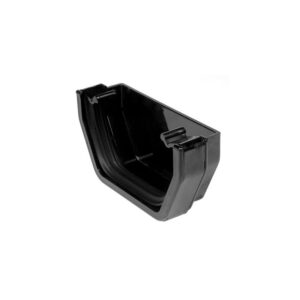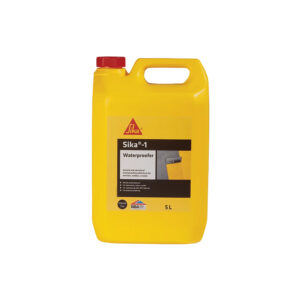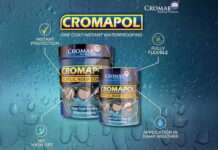It would take too long to recount all the various places in your house where mortar, screeds and concrete are used. Whether it’s the mortar that holds bricks together, or the screed that covers concrete they’re present in every home. However, they also have something else in common – they are very porous and as a result they are extremely vulnerable to water damage.
It’s this property which has damaged so many buildings in the brutalist style (from breton brut or raw concrete). But it doesn’t have to happen to you. You can stop water seep before it even starts if you’re proactive and use a silicate waterproofer like the Sika-1 Waterproofer when making your concrete or mortar.
You will need:
- Safety Gloves and Goggles
- Concrete mixing vessels
- Aggregate
- Gauging Water
- Sika-1 Waterproofer equal to one-tenth of the gauging water (more if mixing wet sand-based materials, see below)
Using the Waterproofer for Mortar or Concrete
In order to use the waterproofer for standard mortar or concrete it needs to be added to the gauging water. You should add one part waterproofer for every ten parts water. The water should then be stirred until the waterproofer has spread evenly throughout all the water. The alternative is to wait until the final mix of concrete has been made and to add the waterproofer again. This is still possible, but is less efficient than adding it to just the water because you will need to mix it to spread it evenly, which is harder once the aggregate has already been added.
Using the Waterproofer for wet sand-based screeds and concretes
Screeds are sand aggregate-based layers laid on top of concrete to provide a tough surface layer. Any concrete made with wet sand will use less gauging water because the sand is already wet, so you will need to apply proportionally more waterproofer to the water to compensate. Apply the waterproofer as per normal but this time use one part waterproofer per eight parts water. You may even want to take it as high as one part waterproofer per seven or six parts water.
Whichever method you use, once it’s done you can apply the concrete as you would normally.

 FloPlast Square Line External Stop End Black – 114mm
FloPlast Square Line External Stop End Black – 114mm 




